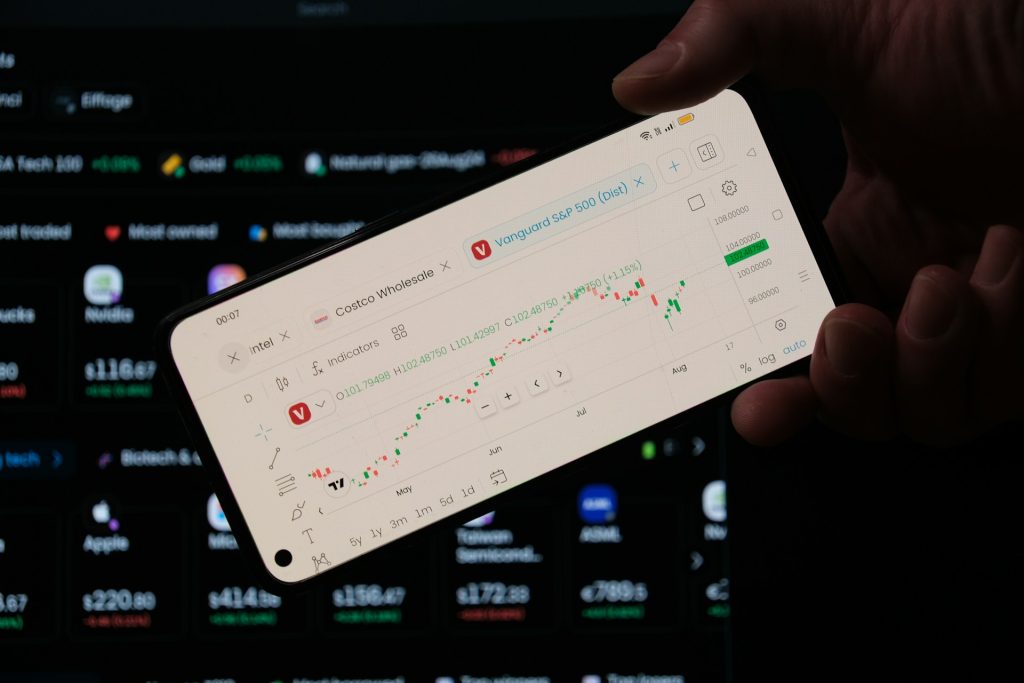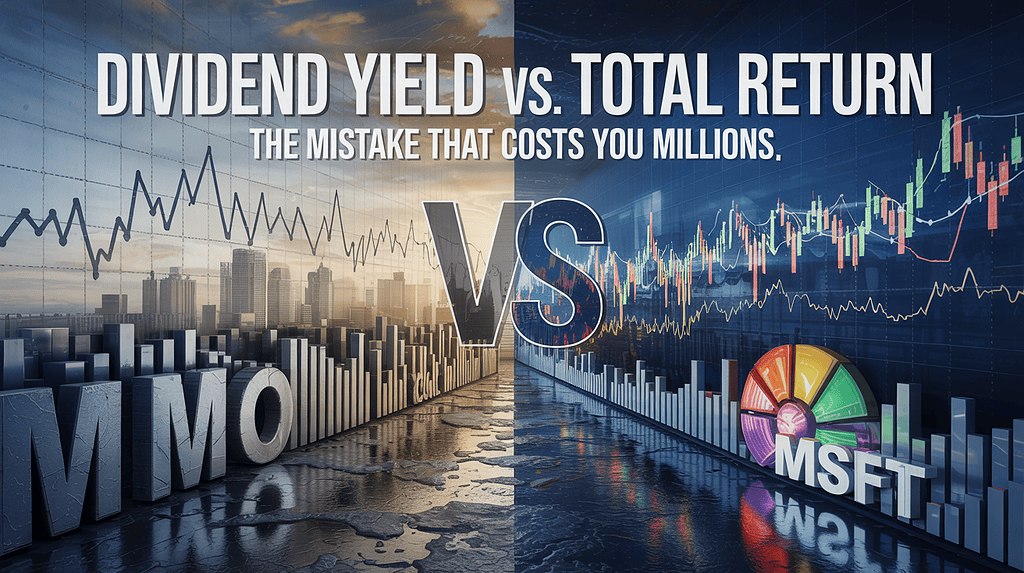
Income investors face a critical question: Should you prioritize monthly or quarterly dividend distributions? The choice between these two schedules can significantly influence your cash flow, reinvestment strategy, and long-term financial goals. Understanding the nuances of each option allows you to make informed decisions that align with your personal financial objectives. Whether you’re a retiree looking to replace income or a growth-focused investor reinvesting dividends, this guide provides a comprehensive overview to help you make the best choice.
Which is Better: Monthly vs Quarterly Dividends? Understanding Dividend Distribution Schedules
The choice between monthly and quarterly dividends goes beyond frequency. Understanding how these schedules align with your financial goals and cash flow needs is crucial for making the right investment decisions. Dividend schedules also influence how quickly your investments compound and how effectively you can manage income from your portfolio. Let’s break down the key concepts.
What Are Monthly Dividends?
Monthly dividends are payouts distributed to shareholders every month. These are common among specific investment vehicles, such as:
- Real Estate Investment Trusts (REITs).
- Certain Exchange-Traded Funds (ETFs), including preferred share funds, covered call funds, etc.
- Closed-end funds.
- Business Development Companies (BDCs) and Master Limited Partnerships (MLPs)
These frequent distributions are particularly appealing to investors who rely on portfolio income to meet regular expenses. The predictability of monthly dividends also makes them an attractive choice for those who value consistent cash flow.
What Are Quarterly Dividends?
Quarterly dividends, on the other hand, are issued every three months and are the standard payment frequency for most publicly traded companies. Well-known examples include blue-chip stocks and dividend aristocrats.
These payouts align with corporate earnings cycles and are often associated with financially stable companies that have a history of rewarding shareholders. Investors seeking higher yields and long-term growth opportunities frequently turn to quarterly-paying stocks.
Why Companies Choose Their Payment Frequency
Companies decide their payment schedules based on factors such as industry norms, shareholder expectations, and cash flow management. For example, REITs often choose monthly payouts to attract income-focused investors, while traditional corporations may prefer quarterly distributions to align with earnings reports. For investors, understanding the rationale behind these schedules provides insights into company operations and stability.
Benefits of Monthly Dividends
Monthly dividends offer unique advantages for investors seeking regular income and faster compounding. These benefits extend beyond predictable cash flow, making them a practical choice for certain financial goals. Here’s why they could be a smart addition to your portfolio.
Steady Income Stream
For retirees or anyone relying on portfolio income, monthly dividends align well with recurring expenses like rent and utility bills. They provide a predictable and frequent cash flow that mirrors monthly financial obligations, creating a reliable income source to meet everyday needs without financial stress.
Compounding Advantage
Monthly payouts enable faster reinvestment, allowing investors to:
- Take advantage of compounding more frequently.
- Dollar-cost average into new positions with smaller increments.
By reinvesting dividends more frequently, investors can accelerate the growth of their portfolio, making monthly dividends particularly attractive for those with long-term investment horizons.
Psychological Benefits
The regularity of monthly payouts can motivate investors by providing visible, consistent returns that reinforce disciplined investing. Seeing tangible results on a monthly basis can boost confidence and commitment to a long-term strategy, especially in volatile markets.
Advantages of Quarterly Dividends
Quarterly dividends are the traditional choice for many investors, offering a mix of stability and potentially higher yields. This section explores their key benefits and why they remain a popular option for income-focused and growth-oriented investors alike.
Higher Yield Options
Companies offering quarterly dividends are often well-established, high-quality firms that may provide higher yields compared to their monthly-paying counterparts. These include dividend aristocrats and other financially robust corporations with a history of growing their payouts over time.
Tax Efficiency
With fewer transactions, quarterly dividends reduce record-keeping complexity and may result in simpler tax filings. This can be a significant advantage for investors managing large portfolios or those concerned about administrative efficiency.
Aligned with Corporate Earnings
Quarterly payouts typically mirror corporate performance, providing stability and predictability in income streams. By aligning with a company’s earnings cycle, quarterly dividends often reflect the financial health and profitability of the organization, giving investors a clearer picture of long-term sustainability.
Drawbacks of Monthly Dividends
While monthly dividends provide consistent income, they are not without their downsides. Understanding these limitations can help you decide if they align with your strategy and financial goals. Below are some of the challenges associated with monthly payouts.
Lower Dividend Yields
Companies with monthly payouts may offer lower yields due to their focus on providing consistent distributions. This trade-off between frequency and yield means investors might sacrifice higher income for more regular payments.
Reinvestment Challenges
Frequent smaller payouts can lead to inefficiencies if transaction costs or minimum investment requirements are a factor. For investors with brokerage fees or high reinvestment thresholds, this could reduce the overall effectiveness of monthly dividends.
Downsides of Quarterly Dividends
Despite their advantages, quarterly dividends may not be ideal for every investor. This section examines potential challenges associated with this payment schedule, particularly for those who prioritize cash flow.
Cash Flow Gaps
Investors reliant on dividends for income might face budgeting challenges during months without payouts. This irregularity can make it difficult to align income with expenses, particularly for those who prefer consistent monthly cash flow.
Missed Reinvestment Opportunities
Longer intervals between payments can slow the compounding effect of reinvested dividends. For investors focused on maximizing portfolio growth, the less frequent payouts of quarterly dividends may limit the speed of compounding returns.
Building a Portfolio for Consistent Monthly Income
It is possible to create a portfolio that mimics the consistency of monthly payouts by strategically selecting quarterly-paying stocks. Here’s how you can achieve predictable income every month and enjoy the benefits of both frequency and quality.
Using Quarterly Dividends to Simulate Monthly Payouts
Investors can construct a portfolio that pays dividends every month by strategically selecting stocks with quarterly payouts on staggered schedules. Here’s how it works:
- Identify Companies with Different Payout Months
- Research dividend-paying stocks and note their payout schedules. For example, some companies may pay in January, April, July, and October, while others might distribute dividends in February, May, August, and November.
- Diversify Across Payout Schedules
- Build a portfolio with stocks that pay dividends in different months. By including companies with staggered payout dates, you can create a consistent monthly income stream without solely relying on monthly payers.
- Combine High-Quality Dividend Stocks
- Focus on high-quality companies with a history of reliable dividend payments. Consider mixing dividend aristocrats and other blue-chip stocks to ensure sustainability and mitigate risk.
Advantages of This Approach
- Steady Cash Flow: Achieve the predictability of monthly dividends without sacrificing quality by relying solely on monthly payers.
- Flexibility: Maintain the option to select from a broader range of stocks.
- Diversification: Spread risk across industries and sectors while aligning payouts with your income needs.
The Dividend Fortress Portfolio: A Reliable Option for Founder’s Club Members
Our exclusive Dividend Fortress Portfolio, available to Founder’s Club members, has been meticulously designed to provide diversification and consistent monthly income. This portfolio is built using only the best dividend aristocrats and dividend kings—companies with a proven history of financial stability and dividend growth. By leveraging these high-quality stocks with staggered payout schedules, the Dividend Fortress Portfolio ensures steady cash flow throughout the year while maintaining robust long-term growth potential. If you are interested in this and 3 other portfolios that the Founder’s Club members enjoy, please subscribe to the newsletter and I will send you more information.
Monthly vs Quarterly Dividends: Choosing the Right Fit
Determining whether monthly or quarterly dividends suit your needs depends on your financial goals and investment strategy. Let’s explore how to make the right choice for your portfolio and align it with your personal objectives.
Aligning with Financial Goals
Your choice between monthly and quarterly dividends should depend on your income needs:
- Monthly dividends: Best for predictable cash flow to cover living expenses.
- Quarterly dividends: Ideal for investors focused on long-term growth and wealth accumulation.
Portfolio Diversification
To balance income and growth, consider combining monthly and quarterly-paying assets. A mix of REITs, ETFs, and dividend aristocrats can help achieve this equilibrium. Diversification across payout schedules ensures that your portfolio delivers consistent income while taking advantage of high-quality investment opportunities.
Risk and Return Considerations
Evaluate the fundamentals of dividend-paying companies. Focus on payout sustainability, growth potential, and the overall financial health of each entity. This careful analysis ensures your portfolio remains resilient and aligned with your financial goals.
Finding the Perfect Balance
The decision between monthly and quarterly dividends boils down to your financial objectives and lifestyle needs. Monthly dividends provide consistent cash flow, while quarterly dividends often align with high-quality, long-term investment opportunities. By understanding these dynamics, you can craft a portfolio tailored to maximize returns and meet your goals. Structuring a balanced approach can help you enjoy the best of both worlds, ensuring steady income and sustainable growth.

Shailesh Kumar, MBA is the founder of Astute Investor’s Calculus, where he shares high-conviction small-cap value ideas, stock reports, and investing strategies.
His work has been featured in the New York Times and profiled on Wikipedia. He previously ran Value Stock Guide, one of the earliest value investing platforms online.
Subscribe to the Inner Circle to access premium stock reports and strategy insights.
Featured in:







